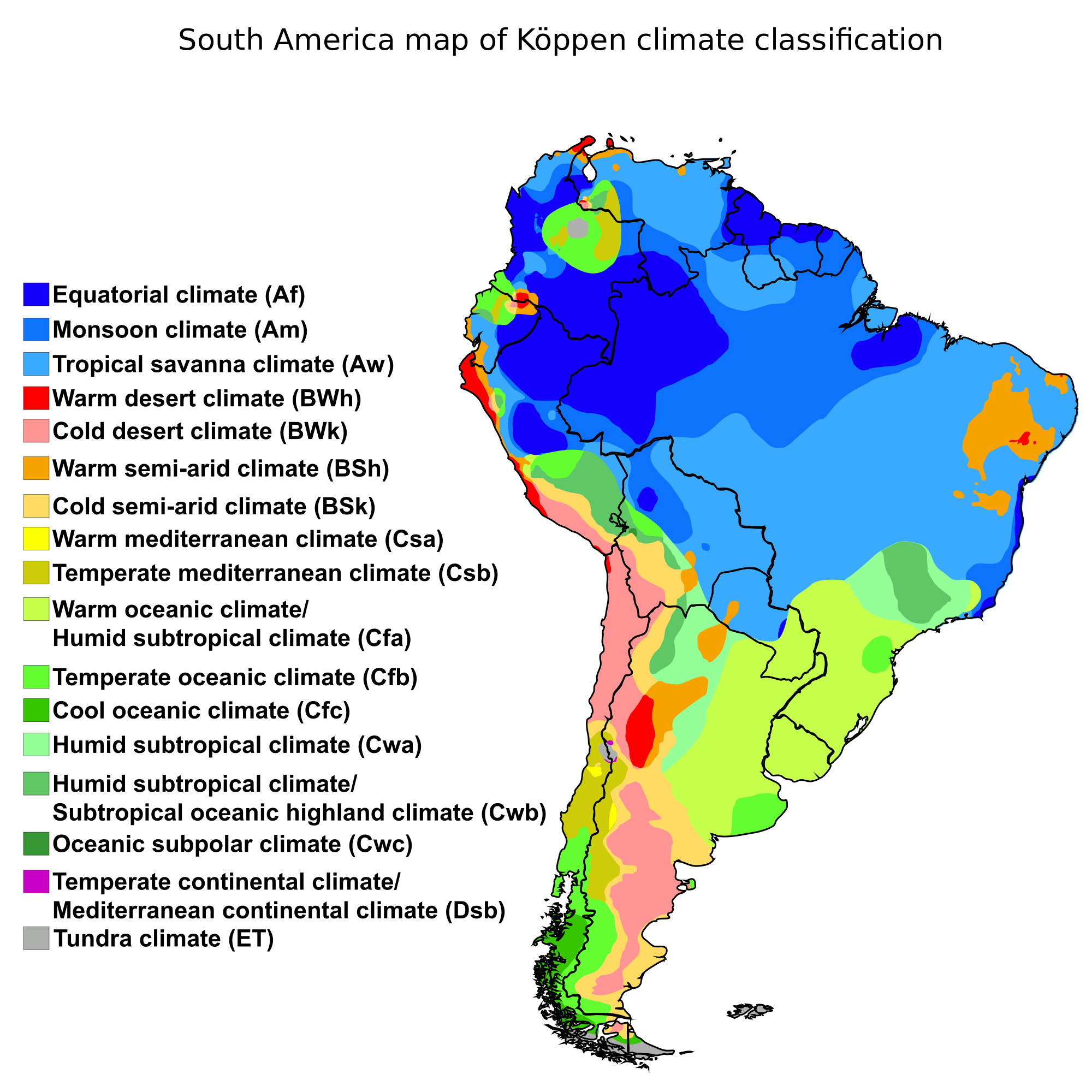
South America climate:
South America Climate is predominantly wet and hot. However the large size of the continent makes the climate of South America varied with each region having its own characteristic weather conditions.
The other factors influencing the climate of South America are the geographical location, ocean currents and winds.
South America Climate differs from one region to another. The Amazon river basin has the typical hot wet climate suitable for the growth of rain forests. The temperatures in the Amazon basin 70 to 90 degrees F. The Andes Mountains, on the other hand, remain cold throughout the year. The temperatures of the mountains is always very low.
The desert regions of Chile is the driest part of South America. The westerly winds carrying moisture shed their moisture on the western parts of the Andes, thus the eastern portions of the mountains receive very little rainfall. The cold Peru Current is responsible for the dry coastal parts of Peru as well as northern Chile. The cold current is unable to hold much moisture.
The highest temperatures of South America have been recorded in Gran Chaco in Argentina, with temperatures going up to 110 degrees F. The wettest place is Quibdo in Columbia. It receives an annual rainfall of 350 inches (890 centimeters).
The four parts of South America which experience heavy rainfall are the Amazon River Basin, coastal parts of French Guiana, Guyana and Suriname, the southwestern parts of Chile and Columbia and Ecuador coasts.
A unique feature of South America Climate is the El Nino. Every two to seven years the cold dry Peru Current weakens and warm waters from the south rush along the coast in a southward direction. The El Nion affects the Climate of South America and causes heavy rainfall in the dry parts of South America.
Quelle Maps of World












